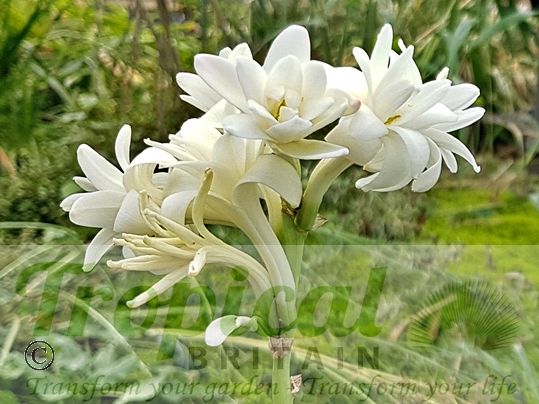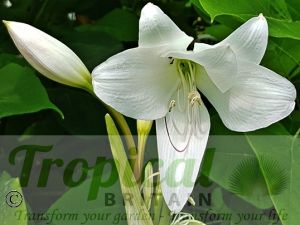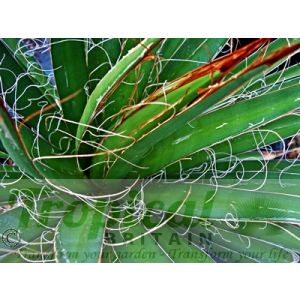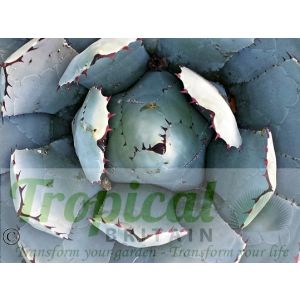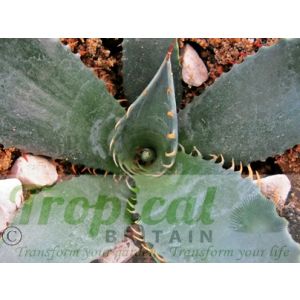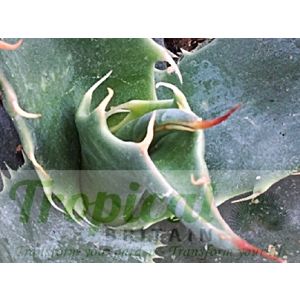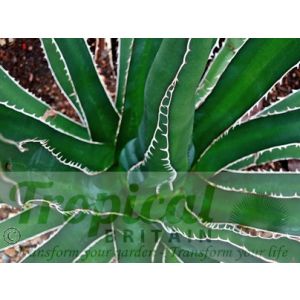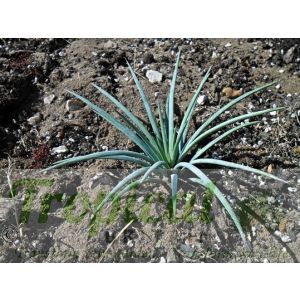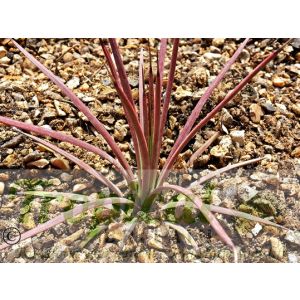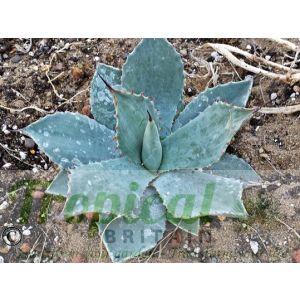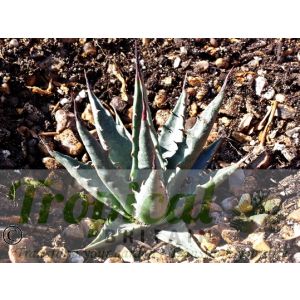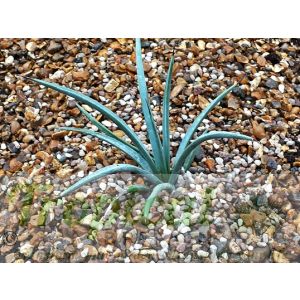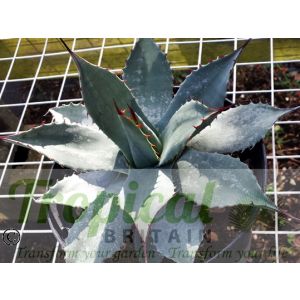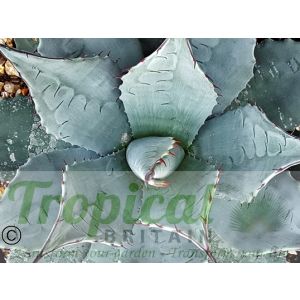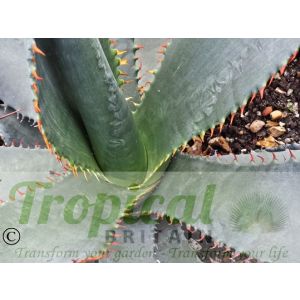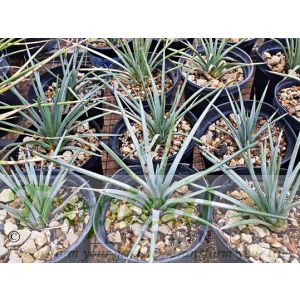Agave amica - (Syn) Polianthes tuberosa 'The Pearl'
- Exquisite highly-perfumed white flowers
- Polianthes tuberosa now renamed as Agave amica
- Easy cultivation and very rewarding
- Keep bulbs frost-free in winter
Agave amica is the new taxonomic name for that gorgeous sweetly-fragrant plant that we have all known as Polianthes tuberosa. 'The Pearl' is the double-flowering form of Tuberose and is usually still found listed as Polianthes tuberosa 'The Pearl'. This taxonomic placement is now recognised by Royal Botanic Gardens, Kew in their Plants of the World Online listing although it seems somewhat unlikely that gardeners or the horticultural world will start refering to it by its new taxonomic name any time soon.
Long celebrated for the exquisite perfume of its flowers, Tuberose has been grown as a tender ornamental for centuries. A herbaceous geophyte, originally from Mexico, it is understood to have been cultivated by the Aztecs. It produces from it tuberous rootstock a rosette of long, narrow, semi-succulent foliage. In summer, a tall scape between 70-100cm emerges on which are borne the waxy, white flowers. The fragrance is overpowering.
It had been known since the mid-1990s, both by morphological and DNA study that Polianthes tuberosa was placed within the Agavoideae and studies showed that the three genera, Manfreda, Polianthes and Prochnyanthes were all nested within the larger genus Agave. In 2017, Joachim Thiede and Rafaël Govaerts published their paper, 'New combinations in Agave (Asparagaceae): A. amica, A. nanchititlensis, and A. quilae' in the journal Phytotaxa, Vol. 306 No. 3 and the taxonomic wanderings of Polianthes tuberosa came to an end as Agave amica.
Additional Information
| Order | Asparagales |
|---|---|
| Family | Asparagaceae |
| Sub-Family | Agavoideae |
| Synonyms | Agave polianthes, Agave tuberosa, Crinum angustifolium, Polianthes gracilis, Polianthes tuberosa, Polianthes tuberosa var. gracilis, Polianthes tuberosa f. plena, Tuberosa amica |
| Geographical Origin | Horticultural cultivar: Type species originally from Mexico |
| Eventual Height | 30cm - flowering spike to 1m |
| Eventual Spread | 30cm |
| Hardiness | Tender - lift bulbs in autumn and store in a warm dark place or leave bulbs in their pots in a warm dry frost-free area until spring before watering again |

Free DELIVERY
ON ALL ORDERS OVER £99THIS OFFER IS VALID ON ALL OUR STORE ITEMS.


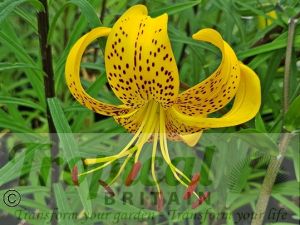
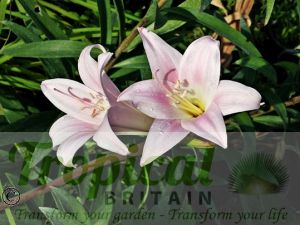
THE PLANTS
- Smaller-Growing Succulents
- Aeonium
- Agave
- Agave americana
- Agave amica
- Agave chrysantha
- Agave cupreata
- Agave deserti
- Agave filifera
- Agave gentryi
- Agave gomezpompae
- Agave havardiana
- Agave horrida ssp horrida
- Agave lechuguilla
- Agave mitis var mitis
- Agave montana
- Agave palmeri
- Agave parryi
- Agave polianthiflora
- Agave striata
- Agave stricta Rubra
- Agave toumeyana
- Agave univittata
- Agave utahensis
- Agave victoriae-reginae - Huasteca Canyon
- Aloe
- Beschorneria
- Bryophyllum
- Dasylirion
- Furcraea
- Hesperaloe
- Hesperoyucca
- Nolina
- Yucca
- Astrophytum
- Austrocylindropuntia
- Brasiliopuntia brasiliensis
- Cereus
- Chamaecereus silvestrii
- Cleistocactus
- Cumulopuntia
- Cylindropuntia
- Echinocereus
- Echinopsis
- Epiphyllum
- Ferocactus
- Gymnocalycium
- Hatiora
- Kroenleinia grusonii
- Lophocereus
- Maihuenia
- Mammillaria
- Matucana
- Myrtillocactus geometrizans
- Opuntia
- Opuntia arenaria SB964
- Opuntia atrispina
- Opuntia basilaris
- Opuntia chisosensis SB992 Brewster Co, TX
- Opuntia cymochila - Brewster Co, TX
- Opuntia engelmannii var. sandia
- Opuntia erinacea
- Opuntia fragilis
- Opuntia humifusa
- Opuntia lindheimeri - Beeville, TX
- Opuntia phaeacantha
- Opuntia pottsii var. nova DJF1441 SW Albuquerque, NM
- Opuntia robusta
- Opuntia sandiana
- Opuntia sanguinicola
- Opuntia stricta
- Opuntia strigil
- Opuntia trichophora
- Oroya peruviana
- Parodia
- Polaskia
- Rhipsalis
- Schlumbergera
- Stenocactus
- Stetsonia
- Tephrocactus
- Alocasia
- Amorphophallus
- Arisaema
- Arum
- Calla
- Caladium
- Colocasia
- Dracunculus
- Monstera
- Helicodiceros muscivorus
- Philodendron
- Pinellia
- Remusatia
- Sauromatum
- Spathantheum
- Typhonium
- Xanthosoma
- Zantedeschia

